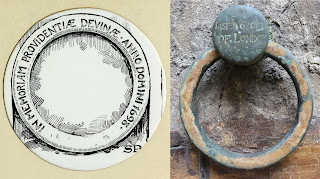“If they can’t be cured by drinking and bathing here, they will never be cured anywhere” Dr Oliver, A Practical Dissertation on the Bath Waters, 1707
 |
| Map of Bath (1959) showing Victorian spa sites. |
This consisted of three sites:
- the redeveloped Hot Bath, known as Old Royal Baths (1829) which included Bath’s first spa swimming bath, the Beau Street Swimming Bath
- the New Royal Baths and Physical Treatment Centre, which opened as a luxurious treatment centre in 1870
- the New Queen’s Baths, next to the King’s Bath, which showcased fashionable treatments from 1889.
 |
| The Stall Street entrance to the Roman Baths with a sign for the King’s and Queens Baths. |
These centres and their spa treatments remained popular
through to the 20th century.
With the Physical Treatment Centre, new and fashionable treatments were made available, inspired by spa towns on the continent. Much of the spa equipment was custom made, and included variants on the Needle Douche, the Plombières Douche, and a sulphur bath. The Vichy Needle Douche was named after the prestigious spa town in Vichy, France. A lifting mechanism was custom made for the Hot Bath, slings or chairs lifted patients in and out of the water.
The water was celebrated for its healing properties, some
believed this to be due to the presence of radium, now known to be a toxic gas.
This was seen in treatments such as Radium Inhalatorium, in which radium was
inhaled through the nose or mouth, or, when used with mineral water, as a nasal
or throat spray. Although the water was proudly advertised as radioactive, in
reality radium is only present in minute quantities.
During World War One, thousands of wounded soldiers were
sent to Bath to recover. They received treatments at the Mineral Water Hospital
and the New Royal Baths were enlarged in 1915 to provide facilities specifically
designed for them.
After the Second World War, the baths’ popularity began to decline. Leisure travel and spa therapy were no longer fashionable, and the city’s infrastructure had been damaged during the Bath Blitz. The New Queen’s Bath was demolished in 1970 and the Physical Treatment Centre closed in 1976, following the withdrawal of NHS funding established in 1948.
 |
| Temporary display in the King's Lounge. |
The objects displayed in the King’s Lounge were removed prior to work on the new Thermae Spa which opened in 2003. They include a hook and handle from the lifting mechanism used to lower patients into the Hot Bath, a pressure gauge from a Vichy Douche, a thermometer which hung in the Hot Bath, and a pamphlet which details treatments and their prices in April 1923.
You can see the display for free by accessing the Stall
Street entrance during opening hours between 10am-5pm.
Eleanor
Collections Assistant
































